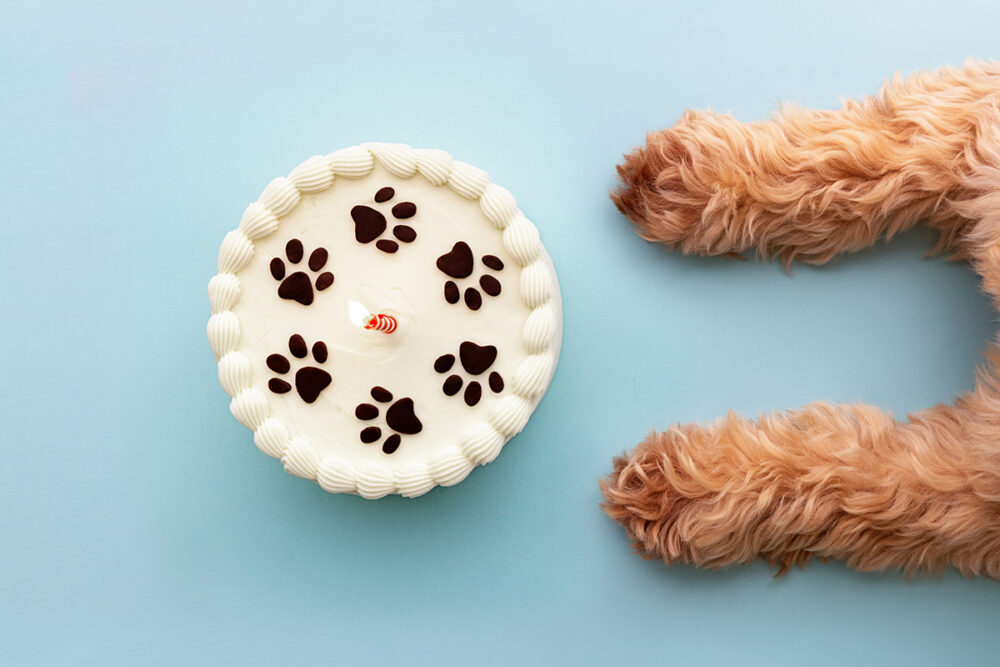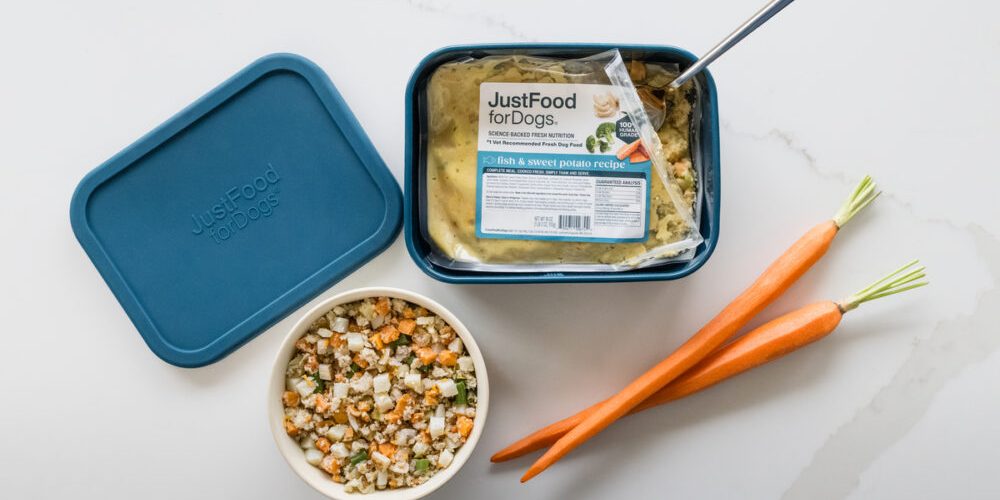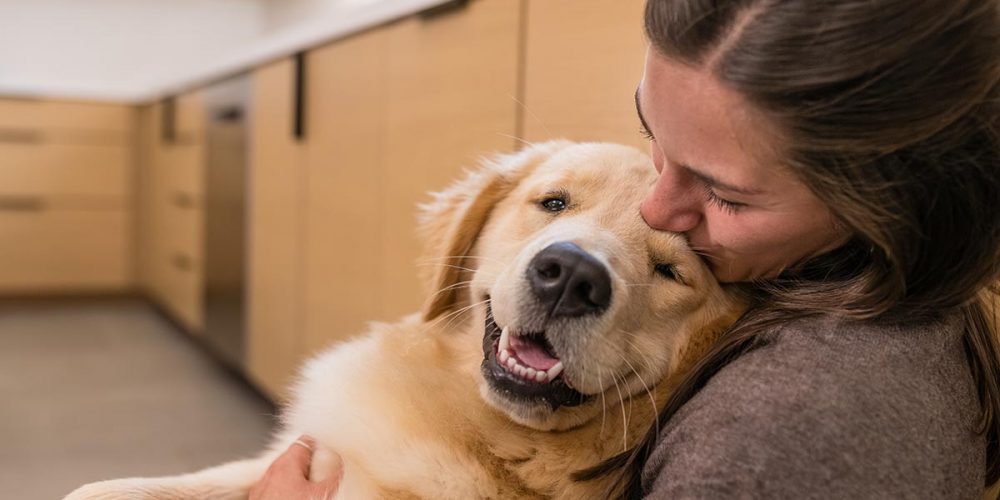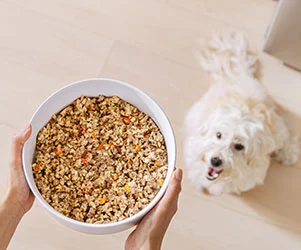While we think dogs are worth celebrating every day, there are a few occasions that demand an extra special treat! A homemade dog cake or dog birthday cake is a great way to show your pup how much you love them, while knowing each ingredient is safe and healthy.
At JustFoodForDogs, we’re passionate about feeding dogs wholesome, safe foods that are cooked with love, whether they come from our kitchen or yours. In this article, we’ll walk you through how to choose and prepare a dog cake recipe that not only satisfies your dog’s taste buds but also supports their overall health!
Why make a homemade cake for dogs?
Cake for dogs can sound a little silly—but the benefits are real, and they’re oh-so satisfying.
- Complete control over what you’re feeding your dog.
- No fillers, preservatives, or artificial additives you can’t pronounce.
- Less risk of digestive upset that other treats can cause.
- Better digestion and health through wholesome foods.
- It’s fun! Learning how to make a dog cake is a fun way to create memories and celebrate milestones!
Key ingredients in a healthy dog cake
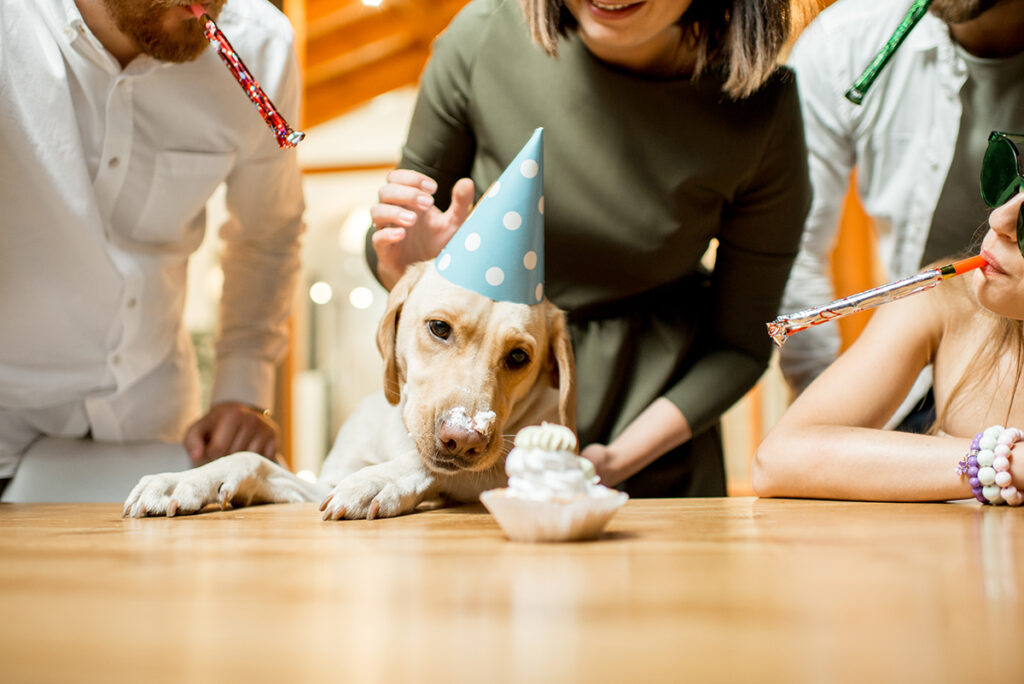
The best dog safe cake recipes feature ingredients that combine safety, nutrition, and flavor. Some of our favorite dog cake recipes call for ingredients like:
- Oat flour or whole wheat flour — Unlike white or all-purpose flour, oat flour and whole wheat flour provide extra fiber for healthy digestion. They’re also less processed and have a lower impact on blood sugar.
- Natural peanut butter — Natural peanut butter contains only peanuts and salt—no xylitol, which is a toxic artificial sweetener. This dog safe cake recipe ingredient adds protein and an irresistible flavor and aroma that pups love.
- Applesauce or pumpkin purée — These fruit-based ingredients add natural flavor, fiber, and vitamins to your homemade dog cake. Just be sure to use plain, unsweetened 100% apple or pumpkin purée with no added xylitol or seasonings.
- Carrots — Carrots bring a sweet flavor, gut-healthy fiber, and vitamins A, B, C, and K to any dog safe cake recipe. When used as a decoration, shredded carrots add a pop of color and a fun crunch.
- Eggs — Eggs don’t just add moisture and texture to your healthy dog cake; they also provide protein, vitamin D, and antioxidants.
- Plain yogurt — Unflavored yogurt is rich in gut-healthy probiotics, protein, and calcium. Make sure your yogurt is xylitol-free, and always store your healthy dog cake in the refrigerator to prevent spoiling.
Easy dog cake recipes
Let’s get barking—er, baking! Here are a few healthy dog-safe cake recipes made with vet-approved ingredients and, of course, love! Don’t see your dog’s favorite flavors? Don’t worry—now that you know what to look for, you’ll find countless online recipes that suit your pup’s needs. Plus, many recipes allow for substitutions, like mashed banana or almond butter. That way, you can bake a custom cake for dogs that’s as unique and special as they are.
Carrot and honey dog birthday cake
Sweet and simple, this pawsome eight-ingredient birthday cake gets its flavor from peanut butter, shredded carrots, and honey. Worried about too much natural sugar? Don’t “bee” concerned, the honey is optional!
Apple and peanut butter cake
This adorable homemade dog cake takes only four ingredients (three if you omit the baking powder) and can be in the oven in less than 10 minutes—just don’t forget to remove the apple seeds and core, as these can be harmful. Peanut allergy? Swap peanut butter for almond or cashew butter and keep the pup party rolling.
Peanut butter, applesauce, and pumpkin cake
This recipe is a wholesome, fall-inspired mix of pumpkin purée, applesauce, and peanut butter. It delivers fiber, vitamins, and taste without added sugar. Plus, the yogurt-and-peanut butter frosting is more than a topper; it’s packed with protein and probiotics for a celebration that’s both happy and health-aware!
Savory chicken and carrot cake
Meat-loving canines, rejoice! This healthy dog cake recipe caters to carnivores with over a cup of protein-rich shredded chicken. Plus, it has hearty whole wheat flour and a satisfying carrot crunch. According to its creator, you can bump up the nutrition with a dash of turmeric for joint support or parsley for fresh breath.
Top it off: Peanut butter and yogurt frosting
Is it really a cake without frosting? We don’t think so! Treat your dog to this tasty yogurt frosting that’s filled with probiotics for digestive health and protein that satisfies their appetite (and their sweet tooth).
Tips for baking and serving dog cakes safely

How do you make a pupcake for a dog? Knowing how to make a dog cake is more than measuring, mixing, and baking. Like any party, a little planning helps ensure your pet’s celebration goes off without a hitch—or an upset stomach. After you’ve chosen your dog’s cake recipe but before you’ve gathered your ingredients, keep these simple tips in mind for safe baking, serving, and celebrating.
- Check with your veterinarian: New ingredients can sometimes upset a dog’s stomach. If your pet has food allergies or a particularly sensitive digestive system, consult your veterinarian before you start shopping or baking.
- Ensure all ingredients are dog-friendly: Double-check every label to ensure your homemade dog cake ingredients are free of raisins, xylitol, chocolate, and artificial sweeteners. Make sure meat-based ingredients don’t contain seasoning such as onion powder.
- Don’t let your pup lick the bowl: Although it’s tempting, raw batter ingredients may lead to digestive upset. Patience, puppy dog!
- Grease cake pans or pupcake pans with coconut oil: Nonstick cooking sprays can contain harmful ingredients. Instead, apply dog-friendly coconut oil to prevent your cake from sticking and provide an extra hint of healthy flavoring.
- Keep dogs out of the kitchen during baking: Once the oven is preheated and the pans are filled, remove your dog from the kitchen. This lets you open the oven door and insert the cake batter-filled pans without the risk of spills or burns. Allow your pup back in after you’ve removed the baked cakes from the oven.
- Check for doneness — Insert a toothpick into the center of your cakes to ensure they’re thoroughly baked. Remember to adjust baking times based on pan size and material, or if you’re making pupcakes instead of regular cake!
- Let the dog cake cool completely before frosting and serving: Once it’s out of the oven, distract your dog with a fun game or a short walk. When the cake is cool to the touch, apply refrigerated frosting, cut, and serve.
- Portion the cake according to your dog’s size: Even special occasion dog treats can add up, leading to unwanted weight gain. Keep your dog’s daily calorie needs in mind, and if needed, cut back on other treats or adjust their regular meals accordingly.
- Monitor your dog’s stool: Although nutritious, added fiber and new foods can overwhelm your dog’s digestive system. Feeding in measured portions and monitoring your dog’s bowel movements can help you avoid unintended consequences like gas or loose poop.
- Store leftovers in the refrigerator for up to seven days: Homemade dog cakes don’t contain preservatives, so they can spoil more quickly. Slow this process by storing uneaten portions in the refrigerator and discarding after one week—if they last that long!
Extra portions? Freeze for future treats — Did you make too much? No worries—slice, wrap, and freeze individual portions so you can make any day a special occasion! Bonus: Use leftover yogurt frosting to fill hollow food toys such as Kongs.
Enhance your pet’s nutrition with JustFoodForDogs
Learning how to make a dog cake that’s tasty and healthy is a fun way to celebrate your four-legged friend and mark a special occasion. But providing balanced, complete nutrition every day is the greatest gift to their health and happiness. JustFoodForDogs DIY Nutrient Blends and Custom Diets make it easy to complement your homemade cake for dogs with vet-formulated meals that support long-term health. Explore our full line of nutritionally complete homemade dog food recipe kits and make every meal a celebration of their health and wellness.
This content is for informational use only and does not replace professional nutrition and/or medical advice, diagnosis, or treatment. It is not a substitute for and should not be relied upon for specific nutrition and/or medical recommendations. Please talk with your veterinarian about any questions or concerns.

